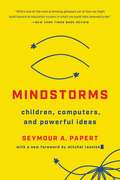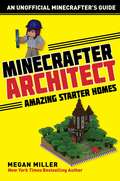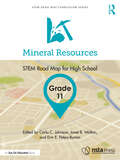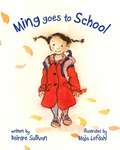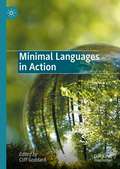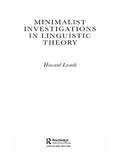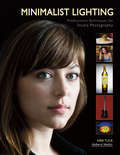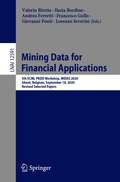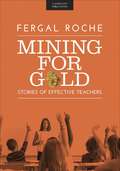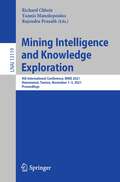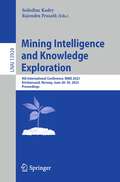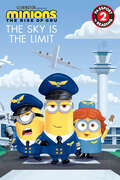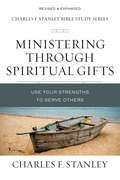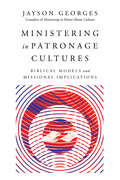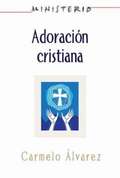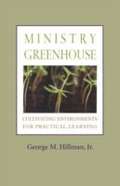- Table View
- List View
Mindstorms: Children, Computers, And Powerful Ideas
by Seymour A. PapertIn this revolutionary book, a renowned computer scientist explains the importance of teaching children the basics of computing and how it can prepare them to succeed in the ever-evolving tech world.Computers have completely changed the way we teach children. We have Mindstorms to thank for that. In this book, pioneering computer scientist Seymour Papert uses the invention of LOGO, the first child-friendly programming language, to make the case for the value of teaching children with computers. Papert argues that children are more than capable of mastering computers, and that teaching computational processes like de-bugging in the classroom can change the way we learn everything else. He also shows that schools saturated with technology can actually improve socialization and interaction among students and between students and teachers.Technology changes every day, but the basic ways that computers can help us learn remain. For thousands of teachers and parents who have sought creative ways to help children learn with computers, Mindstorms is their bible.
Minecrafter Architect: Amazing Starter Homes (Architecture for Minecrafters)
by Megan MillerThe Architecture for Minecrafters series is designed to encourage confidence and creativity by teaching kids to build a wide array of uniquely sophisticated structures. Each book in the series helps players follow blueprints to create impressive masterpieces that are as fantastic as they are functional. Minecrafter Architect: Amazing Starter Homes is the first in this inspiring new series. Guided by hundreds of in-game, step-by-step photos and simple instructions, kids will learn how to build one of ten amazing homes so that they can create interesting and reliable shelter anywhere they spawn. Igloo compounds, prairie houses, and llama ranches are just some of the killer designs that await them when they follow the techniques laid out in this book. With tips for adding d?cor and landscaping touches to their new builds, players can have fun bringing each new home to life. Perfect for beginner to advanced Minecrafters who want to learn more Includes hundreds of step-by-step, full-color photos to guide readers of all ages Helps encourage creativity and problem-solving skills Kids who want to try their hand at virtual design will love the tricks and tips inside this book! Minecrafter Architect: Amazing Starter Homes holds the valuable secrets they need to flex their in-game building skills.
Minecrafter Engineer: Incredible Starter Farms (Engineering for Minecrafters)
by Megan MillerThe Engineering for Minecrafters series is designed to encourage creativity and problem-solving skills in kids who love building in Minecraft. Each book helps players work within the physics of the game to build clever farms, ultra-efficient railways, automated redstone-fueled contraptions, and more. Minecrafter Engineer: Incredible Starter Farms is the first in this compelling and inspiring new series. Guided by hundreds of in-game, step-by-step photos and simple instructions, kids will learn how to engineer one of seven spectacular farms to yield resources and goodies beyond their wildest dreams. Stacks of sugarcanes, gobs of gold, and bushels of blaze rods are the rewards that await them when they follow the techniques laid out in this book. Perfect for beginner to advanced Minecrafters who want to learn more Includes hundreds of step-by-step, full-color photos to guide readers of all ages Helps encourage creativity and problem-solving skills They?re not an expert gamer until they learn the tricks and tips in this book! Minecrafter Engineer: Incredible Starter Farms holds the valuable secrets to becoming the Minecrafter engineer they?ve always wanted to be.
Mineral Resources, Grade 11: STEM Road Map for High School (STEM Road Map Curriculum Series)
by Carla C. Johnson Erin E. Peters-Burton Janet B. WaltonWhat if you could challenge your eleventh graders to come up with a design solution for developing, managing, and utilizing mineral resources? With this volume in the STEM Road Map Curriculum Series, you can! Mineral Resources outlines a journey that will steer your students toward authentic problem solving while grounding them in integrated STEM disciplines. Like the other volumes in the series, this book is designed to meet the growing need to infuse real-world learning into K–12 classrooms. This interdisciplinary, three-lesson module uses project- and problem-based learning to help students develop an in-depth understanding of mineral resources by researching the utility and impact of particular mineral resources on society. Working in teams, students will locate quantitative and qualitative data on mineral resources and discern the reliability of the information, then use their data to write an opinion article and develop a website to convince readers of the effectiveness of a particular design solution for developing, managing, and utilizing mineral resources. To support this goal, students will do the following: Explain how mineral resources are located and used in various ways in society. Explain why mineral resources are important to society. Critically evaluate quantitative and qualitative data about mineral resources. Write an opinion article demonstrating their knowledge about competing design solutions for extracting mineral resources. The STEM Road Map Curriculum Series is anchored in the Next Generation Science Standards, the Common Core State Standards, and the Framework for 21st Century Learning. In-depth and flexible, Mineral Resources can be used as a whole unit or in part to meet the needs of districts, schools, and teachers who are charting a course toward an integrated STEM approach.
Minerva Louise at School
by Janet Morgan StoekeOut for an early morning walk, a chicken wanders into a school that she mistakes for a fancy barn.
Ming Goes to School
by Deirdre Sullivan Maja LöfdahlMing goes to school, where she learns to say hello and good-bye. She meets new friends and introduces them to old friends (including her favorite teddy). She builds sandcastles and makes snow angels; she traces, glitters, and glues. She is so fearless that when held at sword point, she even walks the plank! And when she’s playing in the mud, she reaches out and touches the worms with her bare hands. But despite those brave deeds, she isn’t quite ready for the big red slide-not yet.This is a very sweet story with soft, evocative watercolor illustrations that will help kids to grow comfortable with the idea of starting preschool. Ming is curious and playful and ready for adventure, but even she gets scared of new things sometimes. Kids will relate to her desires and fears and will be excited to see Ming at the top of the slide by the story’s end.A quiet and reassuring picture book for preschoolers (3-5), this is a wonderful going-to-school story that can be read both at home and in the classroom or childcare center. The illustrations provide a lot of diversity of characters, making this feel like any classroom in any school in the country.
Minimal Languages in Action
by Cliff GoddardThis edited book explores the rising interest in minimal languages – radically simplified languages using cross-translatable words and grammar, fulfilling the widely-recognised need to use language which is clear, accessible and easy to translate. The authors draw on case studies from around the world to demonstrate how early adopters have been putting Minimal English, Minimal Finnish, and other minimal languages into action: in language teaching and learning, ‘easy language’ projects, agricultural development training, language revitalisation, intercultural education, paediatric assessment, and health messaging. As well as reporting how minimal languages are being put into service, the contributors explore how minimal languages can be adapted, localised and implemented differently for different purposes. Like its predecessor Minimal English for a Global World: Improved Communication Using Fewer Words (Palgrave Macmillan, 2018), the book will appeal to students and scholars of applied linguistics, language education and translation studies, as well as to professionals in any field where accessibility and translatability matter.
Minimalist Investigations in Linguistic Theory (Routledge Leading Linguists #No.8)
by Howard LasnikProfessor Howard Lasnik is one of the world's leading theoretical linguists. He has produced influential and important work in areas such as syntactic theory, logical form, and learnability. This collection of essays draws together some of his best work from his substantial contribution to linguistic theory.
Minimalist Lighting
by Kirk TuckPacked with incredible images and step-by-step techniques, this book is a must have for commercial, wedding, and portrait photographers working on location who want to maximize their time behind the camera and minimize their time spent hauling cumbersome lighting equipment. The tips show how to select easily portable and versatile equipment for location shoots, cutting down on the packing and porting of expensive equipment. With techniques and information on the latest technology-including battery-powered flashes and accessories-this reference shows photographers how to work with smaller and lighter-weight lighting equipment without sacrificing quality. Whether shooting portraits, landscapes, or interiors, whether indoors or out, photographers will embrace the portable approach offered in this valuable resource.
Minimalist Lighting: Professional Techniques for Studio Photography
by Kirk TuckPhotographers learn how to create amazing photography with this simple, basic, money-saving approach to working in the studio. While exploring available lighting and equipment, this reference tackles the concerns of studio photographers regarding too much gear, not enough space, and a strict budget and offers alternative techniques for photographing subjects. Tips for how to set up a studio in a limited amount of space, what kind of equipment works best for different effects, and finding great tools for budget prices make this a truly comprehensive reference.
Mining Complex Text, Grades 2-5: Using and Creating Graphic Organizers to Grasp Content and Share New Understandings (Corwin Literacy)
by Karen D. Wood Diane K. Lapp Thomas DeVere WolseyYour power tools for making the complex comprehensible Now more than ever, our students are being asked to do highly advanced thinking, talking, and writing around their reading. If only there were ingenious new tools that could give our students the space to tease apart complex ideas in order to comprehend and weld their understandings into a new whole. Good news: these tools exist—Mining Complex Text. You’ll learn how graphic organizers can: Help students read, reread, and take notes on a text Promote students’ oral sharing of information and their ideas Elevate organized note-making from complex text(s) Scaffold students’ narrative and informational writing
Mining Complex Text, Grades 2-5: Using and Creating Graphic Organizers to Grasp Content and Share New Understandings (Corwin Literacy)
by Karen D. Wood Diane K. Lapp Thomas DeVere WolseyYour power tools for making the complex comprehensible Now more than ever, our students are being asked to do highly advanced thinking, talking, and writing around their reading. If only there were ingenious new tools that could give our students the space to tease apart complex ideas in order to comprehend and weld their understandings into a new whole. Good news: these tools exist—Mining Complex Text. You’ll learn how graphic organizers can: Help students read, reread, and take notes on a text Promote students’ oral sharing of information and their ideas Elevate organized note-making from complex text(s) Scaffold students’ narrative and informational writing
Mining Complex Text, Grades 6-12: Using and Creating Graphic Organizers to Grasp Content and Share New Understandings (Corwin Literacy)
by Karen D. Wood Diane K. Lapp Thomas DeVere Wolsey Kelly JohnsonYour power tools for making the complex comprehensible Now more than ever, our students are being asked to do highly advanced thinking, talking, and writing around their reading. If only there were ingenious new tools that could give our students the space to tease apart complex ideas in order to comprehend and weld their understandings into a new whole. Good news: these tools exist—Mining Complex Text. You’ll learn how graphic organizers can: Help students read, reread, and take notes on a text Promote students’ oral sharing of information and their ideas Elevate organized note-making from complex text(s) Scaffold students’ narrative and informational writing
Mining Complex Text, Grades 6-12: Using and Creating Graphic Organizers to Grasp Content and Share New Understandings (Corwin Literacy)
by Karen D. Wood Diane K. Lapp Thomas DeVere Wolsey Kelly JohnsonYour power tools for making the complex comprehensible Now more than ever, our students are being asked to do highly advanced thinking, talking, and writing around their reading. If only there were ingenious new tools that could give our students the space to tease apart complex ideas in order to comprehend and weld their understandings into a new whole. Good news: these tools exist—Mining Complex Text. You’ll learn how graphic organizers can: Help students read, reread, and take notes on a text Promote students’ oral sharing of information and their ideas Elevate organized note-making from complex text(s) Scaffold students’ narrative and informational writing
Mining Data for Financial Applications: 5th ECML PKDD Workshop, MIDAS 2020, Ghent, Belgium, September 18, 2020, Revised Selected Papers (Lecture Notes in Computer Science #12591)
by Valerio Bitetta Ilaria Bordino Andrea Ferretti Francesco Gullo Giovanni Ponti Lorenzo SeveriniThis book constitutes revised selected papers from the 5th Workshop on Mining Data for Financial Applications, MIDAS 2020, held in conjunction with ECML PKDD 2020, in Ghent, Belgium, in September 2020.*The 8 full and 3 short papers presented in this volume were carefully reviewed and selected from 15 submissions. They deal with challenges, potentialities, and applications of leveraging data-mining tasks regarding problems in the financial domain. *The workshop was held virtually due to the COVID-19 pandemic. “Information Extraction from the GDELT Database to Analyse EU Sovereign Bond Markets” and “Exploring the Predictive Power of News and Neural Machine Learning Models for Economic Forecasting” are available open access under a Creative Commons Attribution 4.0 International License via link.springer.com.
Mining For Gold: Stories Of Effective Teachers
by Fergal RocheAn entertaining story of the many teachers Fergal Roche, chief executive of The Key, has come across in his long career; each one effective in their own special way, despite their hugely different approaches, ordinary people who have produced an extraordinary impact. If you are currently a teacher, were once a teacher, or are thinking about becoming a teacher, this book will be like coming to a party. Or if you hate parties, doing something you really love. The message, in a beautifully light and accessible tone, is that teaching is the most exciting and significant job in the world, hugely complex and exhausting, yes, but a role that needs to be mastered over decades of practice.
Mining For Gold: Stories Of Effective Teachers
by Fergal RocheAn entertaining story of the many teachers Fergal Roche, chief executive of The Key, has come across in his long career; each one effective in their own special way, despite their hugely different approaches, ordinary people who have produced an extraordinary impact. If you are currently a teacher, were once a teacher, or are thinking about becoming a teacher, this book will be like coming to a party. Or if you hate parties, doing something you really love. The message, in a beautifully light and accessible tone, is that teaching is the most exciting and significant job in the world, hugely complex and exhausting, yes, but a role that needs to be mastered over decades of practice.
Mining Intelligence and Knowledge Exploration: 9th International Conference, MIKE 2021, Hammamet, Tunisia, November 1–3, 2021, Proceedings (Lecture Notes in Computer Science #13119)
by Richard Chbeir Yannis Manolopoulos Rajendra PrasathThis book constitutes revised selected papers from the refereed proceedings of the 9th International Conference on Mining Intelligence and Knowledge Exploration, MIKE 2021, which took place in Hammamet, Tunisia, in November 2021. The 22 full papers included in this book were carefully reviewed and selected from 61 submissions. They deal with topics such as evolutionary computation, knowledge exploration in IoT, artificial intelligence, machine learning, data mining and information retrieval, medical image analysis, pattern recognition and computer vision, speech / signal processing, text mining and natural language processing, intelligent security systems, Smart and Intelligent Systems, etc.
Mining Intelligence and Knowledge Exploration: 9th International Conference, MIKE 2023, Kristiansand, Norway, June 28–30, 2023, Proceedings (Lecture Notes in Computer Science #13924)
by Rajendra Prasath Seifedine KadryThis book constitutes the refereed post-conference proceedings of the 9th International Conference on Mining Intelligence and Knowledge Exploration, MIKE 2023, held in Kristiansand, Norway, during June 28–30, 2023. The 22 full papers and 16 short papers included in this book were carefully reviewed and selected from 87 submissions. They were grouped into various subtopics including Knowledge Exploration in IoT, Medical Informatics, Machine Learning, Text Mining, Natural Language Processing, Cryptocurrency and Blockchain, Application of Artificial Intelligence, and other areas.
Minions: The Sky Is The Limit (minions) (Passport to Reading Level 2)
by Sadie ChesterfieldMake reading fun and relive your favorite moments from Minions: The Rise of Gru with this full-color leveled reader for kids! Minions: The Rise of Gru, the highly anticipated sequel to the 2015 box office hit, features even more Minion mischief. At long last, the Minions unite with a young Gru, wreaking havoc in his 1970s neighborhood. When he gets a chance to join the world's baddest villains, the Vicious 6, Gru leaves the Minions behind. Kevin, Stuart, and Bob go to great lengths to win back their "mini-Boss," trekking through the desert, piloting an airplane, and even learning kung fu from an unorthodox teacher. But it's only upon meeting his favorite villain, Wild Knuckles, that Gru learns loyalty and friendship make villains stronger and then realizes that together, he and the Minions make the most despicable team ever! With a winning combination of favorite licensed characters and carefully chosen text, reading along or reading alone just got more fun with Passport to Reading! All books include a parent letter, word count, Guided Reading level, and number of sight words. Level 2: Reading out Loud: Encourages developing readers to sound out loud and includes more complex stories with simple vocabulary. Minions: The Rise of Gru © 2022 Universal City Studios LLC. All Rights Reserved.
Ministerielle Steuerung von Universitäten durch Kennzahlen: Eine empirische Analyse in fünf Bundesländern (Higher Education Research and Science Studies)
by Björn MöllerAusgangspunkt der Dissertation ist der Wandel des Verhältnisses zwischen Staat und Universitäten unter dem Paradigmenwechsel des New Public Managements. Dies führte unter anderem dazu, dass die Funktionen des Staates zu Lasten der Einflussmöglichkeiten in den Hochschulbereich reduziert wurden und dem Staat drohte, den Einblick in die Universitäten zu verlieren. Um diesem drohenden Verlust entgegenzuwirken, nutzte der Staat vermehrt kennzahlenbasierte Steuerungsinstrumente. Daraus ergab sich die übergreifende Fragestellung, welche Bedeutung metrifizierende Berichtspflichten und metrifizierte Berichte bei der ministeriellen Steuerung von Universitäten haben. Zur Analyse dieses organisationssoziologischen Problems der Hochschulforschung wurde ein politikwissenschaftlicher Zugang gewählt. Dieser ermöglicht die in der Hochschulforschung häufig abstrakte Beschreibung der Politik als „Staat“ dezidiert auszuformulieren und gleichzeitig die Universität als Untersuchungsgegenstand in der Politikwissenschaft zu etablieren. Daran anknüpfend wurde die Prinzipal-Agenten-Theorie als theoretischer Zugang gewählt. Diese bietet den Vorteil, das hierarchische Verhältnis zwischen Ministerial- und Universitätsvertreter:innen angemessen berücksichtigen zu können.
Ministering Through Spiritual Gifts: Use Your Strengths to Serve Others (Charles F. Stanley Bible Study Series)
by Charles F. StanleyWhat are your gifts? How are you using your abilities to grow God's kingdom?In Ministering Through Spiritual Gifts, you will find how to pinpoint your God-given strengths by exploring the seven gifts listed in Romans 12. You'll be challenged to consciously develop these gifts—not for your own personal gain, but to minister to others. Challenging, thought-provoking, and deeply rooted in Scripture, this Bible study calls you to deeper service to the Lord as you embrace the ministry gifts He has given you.With over 1 million copies sold, the Charles F. Stanley Bible Study Series is a unique approach to Bible study, incorporating biblical truth, personal insights, emotional responses, and a call to action.Each study draws on Dr. Stanley's many years of teaching the guiding principles found in God's Word, showing how we can apply them in practical ways to every situation we face. This edition of the series has been completely revised and updated, and includes two brand-new lessons from Dr. Stanley.Each of the twelve lessons includes:Overview: A brief look at what is covered in the lessonLife's Questions: A teaching from Dr. Stanley that unpacks the topic of the lessonLiving the Principle: Application and Bible study questions based on the key pointsReflection: Key takeaways to put into practice today and tomorrow
Ministering in Patronage Cultures: Biblical Models and Missional Implications
by Jayson GeorgesPatronage governs many relationships in Majority World cultures. But regrettably, Western theologians and missionaries rarely notice this prominent cultural reality.Ministering in Honor-Shame Cultures
Ministerio - Adoración cristiana: Christian Worship: The Theology and Practice of Protestants AETH
by Association for Hispanic Theological EducationEste libro examina el tema de la adoración cristiana desde el punto de vista del protestantismo y la diversidad dentro de este. Es en esta diversidad que se han configurado modelos distintos en la organización eclesiástica y ha resultado en una adoración marcadamente creativa y flexible. El autor nos guiará por el desarrollo histórico de esta adoración y expondrá algunos de los modelos básicos.Written in Spanish, this book examines the topic of the Christian worship and its diversity from the Protestant perspective. This diversity has contributed to the configuration of different worship models in the ecclesiastical organization that results in a flexible and creative worship. The author will guide us for the historic development of Christian worship and discuss some of the basic models.
Ministry Greenhouse: Cultivating Environments for Practical Learning
by George HillmanHillman also provides tools for identifying competencies and sample goals. A great internship experience places a student in an environment where God can work through him or her in the lives of other people an din the student's own life to develop calling, character, and competencies. Ministry Greenhouse shows students, their supervisors, and the congregations and other organizations they serve how they can create just such an environment.
